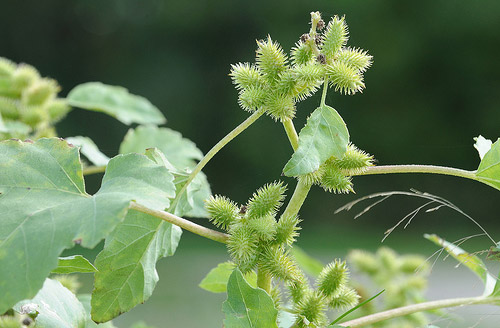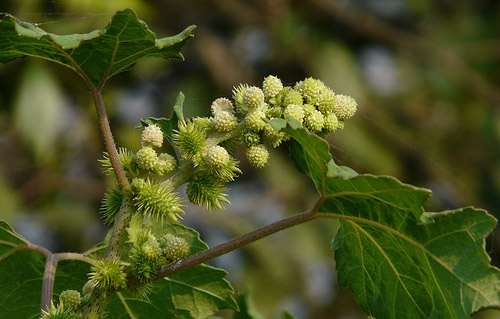
It’s another Monday morning and a great time to learn about another plant that is dangerous to your horse. Today we’ll take a closer look at a plant that just sounds angry and spiny, the Common Cocklebur.
A Little About the Common Cocklebur
Xanthium strumarium is the Common Cocklebur, this is an annual weed with an irregular, mottled stem, thick leaves, small flowers which grow on short branches and the fruit is a burr with hooked spines.
How Dangerous Is It?
This plant is obviously something most grazers won’t mess with, not only is it unpalatable, but it’s got huge thorns! Really only a concern during a seriously difficult drought season, but one to know about anyway. Cockleburs contain carboxyatractyloside which affects the nervous system.
All parts of the plant are toxic (with the highest concentration in the seeds) to equines.

What To Look For
You know your animal the best, so you should know when something is amiss. Cocklebur toxicity symptoms can include loss of appetite, depression & weak pulse. While the burs can cause mechanical damage to the mouth and throat.
Learn More
Be sure to check out the Common Cockleburr page to learn more about the plant and while you are at it why not check out more toxic plants?
*It should be noted that I’m not a veterinarian. This information is written specifically for horses and should be used for reference purposes only. If you think your horse has eaten something toxic call your vet right away.
